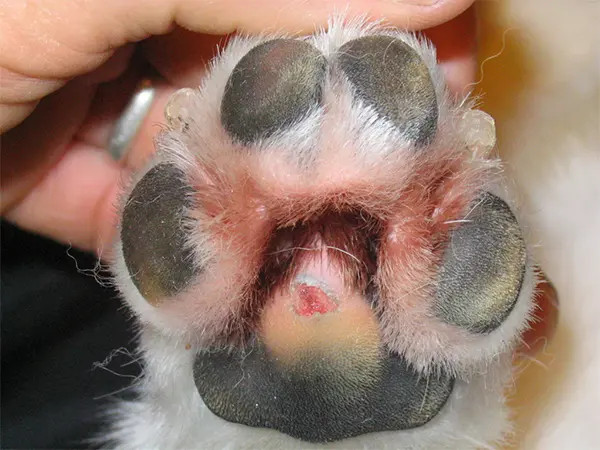
Animals are susceptible to frostbite when exposed to freezing and subfreezing conditions. Commonly, frostbite will affect the ears, tail, scrotum, feet & toes. Frostbite occurs when the blood vessels constrict from extreme cold to conserve body heat and no longer push warm blood to the extremities. This causes these outer areas of the body to become colder and start to freeze. If the tissue freezes it will die. If the animal is on any type of medication, such beta-blockers, or has a condition like diabetes it may increase the risk of the animal’s getting frostbite. The risk of frostbite also increases when there is a lot of dampness and wind along with freezing temperatures.
Frostbite may appear as a pale or grey colored area on the skin that is cold and hard to the touch. As the affected area starts to thaw it may become red. With severe frostbite, tissue will start turning black in color and will slough off over a period of weeks. At the initial point the frostbite is usually not painful but as the tissue thaws out and warms it can be very painful. If you suspect that the animal has frostbite you should immediately warm the affected area with warm water, never hot. The recommended water temperature is 104 to 108 degrees F (40 to 42C). Soak the affected area or use warm compresses. Do not use dry heat from a hair dryer or heating pad. After you have warmed the area dry thoroughly and gently, do not massage or rub the affected area.
After administering initial first aid, contact your veterinarian to have the animal examined. Be sure to wrap it in a blanket and keep it warm during the trip. Do not warm a frostbitten area if it can’t be kept warm afterwards, because refreezing of the area will injure the area even more. Do not give any medicine for pain unless you have been instructed to do so by a veterinarian. It may take several days to know just how much tissue was damaged. Pain medication will be issued, and antibiotics to prevent any kind of secondary infection. Often if an animal is brought in for frostbite, they will have hypothermia (too low a body temperature) as well and this will also be treated. In severe cases of frostbite in which a lot of tissue dies it may be necessary to amputate the affected body parts.
Related Articles & Free Email Newsletter Sign Up
How to Prepare Chickens For Winter Weather
How to Prevent Horse Respiratory & Skin Problems During Winter




Comment here